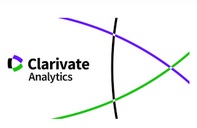COMPETITION EFFECT ON THE WORDS VISUAL RECOGNITION WITH MASKED PRIMING TASK: A PSYCHOPHYSIC APPROACH
Abstract
One of the most central issues in cognitive psychology is how the processing of a given word is affected by its similarly spelled words (the so-called “orthographic neighbors”). In the present study, we analyzed how the magnitude of orthographic/repetition priming (e.g., tigus- TIFUS and tifus-TIFUS) is modulated by the number of neighbors of a target word. We used the masked priming technique (Forster & Davis, 1984) at a 33 ms stimulusonset asynchrony (SOA) in the lexical decision task. Because of the very brief SOA, a psychophysical methodology (i.e., few but well-trained participants) was adopted. Activation-based models predict greater orthographic/ repetition effects for the words with few neighbors, whereas the entry-opening model (Forster & Davis, 1984) predicts an interaction between number of neighbors and orthographic (but not repetition) priming. The results show greater repetition/orthographic priming effects for hermit words than for words with many neighbors, which is consistent with an activation account. Finally, we examine the advantages of using a psychophysical methodology combined with the masked priming technique.Downloads
Download data is not yet available.
Metrics
Views/Downloads
-
Abstract786
-
PDF (Español (España))329
Perea, M., & Rosa, E. (2000). COMPETITION EFFECT ON THE WORDS VISUAL RECOGNITION WITH MASKED PRIMING TASK: A PSYCHOPHYSIC APPROACH. Anales De Psicología Annals of Psychology, 16(2), 215–225. Retrieved from https://revistas.um.es/analesps/article/view/29451
Cognitive processes
About Copyright and Licensing, more details here.










